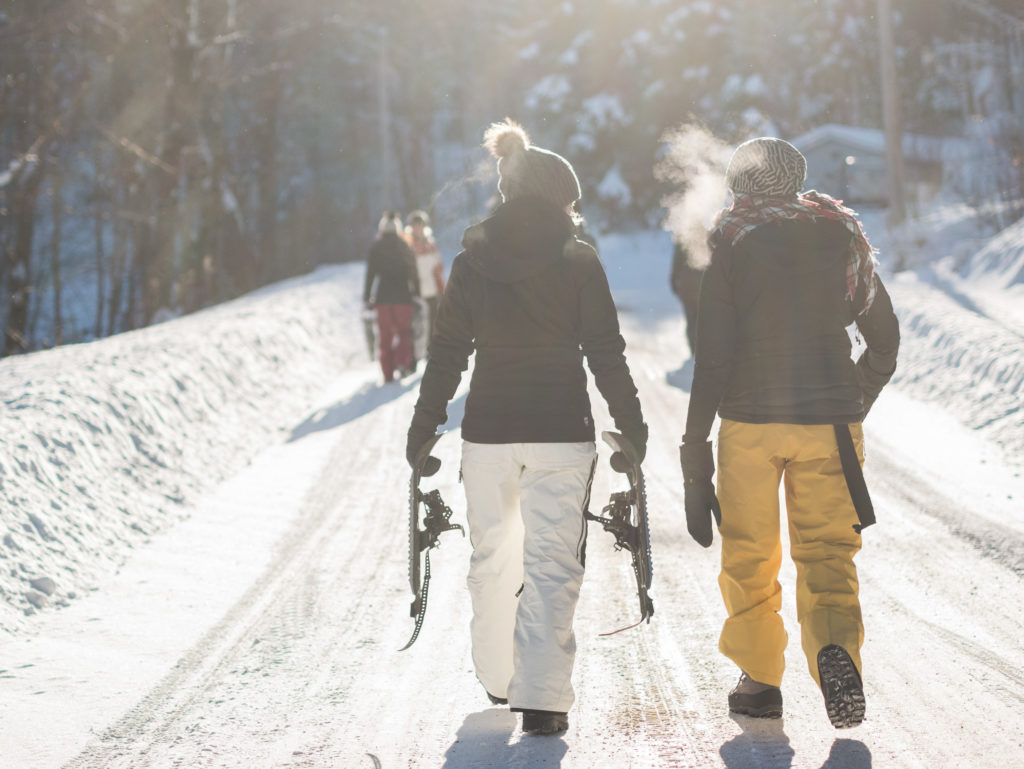The Art of Layering
Posted
by
WinterWomen
on Friday, September 30, 2016
The windows of summer are soon to be closed while the fresh doors of fall are opening. It's just about time to put away the flip-flops and sun dresses. Summer attire certainly requires less thought overall, as it doesn't serve as much of a purpose as winter clothing. Winter outfits, however, can entail a bit more consideration to balance fashion, comfort, and function. It can be intimidating figuring out the perfect layering system. I've lived in mountain climates most my life and I still question my layering techniques at times. clothing. Winter outfits, however, can entail a bit more consideration to balance fashion, comfort, and function. It can be intimidating figuring out the perfect layering system. I've lived in mountain climates most my life and I still question my layering techniques at times.
How cold will it be at night?
Did I bring enough layers?
Did I bring the right layers?
Whether you're a seasoned pro, or just moved to an unfamiliar climate, here are a few pointers on how to layer properly this winter.
No matter what activity, you should have a base layer. This is the first layer you put on, the closest to your skin. The base layer functions to manage moisture by helping move it from the body to the outside of the fabric so it can evaporate away from the skin. This function is helpful in staying warm because, as you work up a sweat you don't want the moisture trapped against your body which causes a cooling effect. In order to do this, the material should be moisture wicking such as a synthetic or wool fabric.
Wool vs Synthetic
Wool tends to be softer and naturally fights odor causing bacteria. The drawback of wool is that many brands don't make wool items that you can tumble dry, due to durability.
Synthetic options are more durable and tend to have better moisture wicking abilities but, unless treated with an anti-microbial technology, can get pretty smelly after one or two uses.
There are also hybrid options that have the best of both worlds.
Weights
There are also different ‘weights' to choose from. There are lightweight options, as well as mid and heavyweight. To help choose the proper selection, evaluate your activity and the temperature.
Lightweight- This is a great option for a blue-bird day when you're not anticipating a very extreme weather day or plan to really work up a sweat with activity.
Midweight- A very popular choice for your average outdoor adventure. Provides a bit more warmth without being too hot.
Heavyweight- Maybe you're just going to an outdoor football game, maybe you're planning on taking on the snow storm for some fresh tracks, either way, this option will surely help you stay warm.
No matter the weight, a base layer should be tight fitting. This layer is also where you can have a little fun, as far as style goes. They may not always be seen, but base layers come in many colors and fun patterns. See for yourself what designs are available for women's base layers.
This is the insulating layer. Depending on the weather and activity, this layer can potentially be the final layer, or not present at all. It's meant to hold in heat while also allowing the body to breathe. Fleece, wool, and synthetic down are all popular materials used for mid-layers. These three are good insulators while still allowing breathability and moisture evaporation. The three mentioned materials also provide warmth without added bulkiness which improves comfort level when layering up. As mentioned earlier, this layer isn't always necessary if you have an appropriate shell layer for
the weather. The mid-layer can also be sufficient enough for certain activities and weather conditions to be the outer layer. If the weather is expected to be rainy or windy, however, it's best to have another layer over the mid-layer. While the mid-layer provides warmth, it does not provide very good protection from wind or moisture. This layer can also be a bit versatile, we love the Patagonia Nano Puff Vest!
-Remember, the mid-layer is meant for insulation; the chest and core are key parts to keep warm to help improve overall body warmth.
This is the final layer in the line-up. Again, depending on the weather and activity, your mid-layer may be your final layer, but the shell layer is the main defense against the outdoor elements. There are many options for the shell or outer layer. A raincoat is considered a shell layer, but you may need a better option for cold environments.
Softshell Vs Insulated Shell
One option is a women's soft shell, great for a semi-chilly day where the sun is shining. When an insulated jacket would be too hot, the soft shell jacket provides a great alternative. These are breathable and normally water resistant or waterproof, but not very bulky.
On very cold or stormy days, you may want to opt for an insulated shell. This will look like your traditional winter jacket. These can come in many different styles that cater to different activities. There are options meant for physical activity with features like pit zips and powder skirts. There are also jackets that are meant more for après ski that aren't quite as technical but showcase your personal style.

Hopefully, this helps the next time you're preparing for an outdoor activity in the cold. Make sure to have some fun with it. Just because the weather requires more clothing, doesn't mean you have to sacrifice your sense of style. Pick up any of the layers mentioned above in our online store and stay warm this winter.
And, to help add even more flare, you can pick out the proper hat, gloves, and socks-but that's a discussion for another day
Categories:
Fashion
|
Ski & Ride
Tagged: Layering, mid-layer, Patagonia, stay warm, base layer, dress for winter, hot chillys, nano puff vest, shell layer
« Previous Post
Next Post »
|